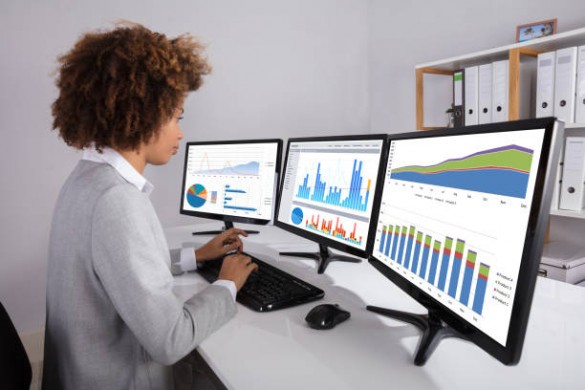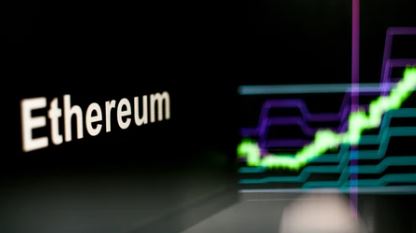Spaceandpeople (LSE:SAL) is a service business with little need of fixed assets nor large sums tied up in net working capital. It rents the office space in needs for its 92 staff and does not own much in the way of physical assets.
While it needs to invest in the purchase of impressive display stands and Mobile Promotional Kiosks, MPK’s the total investment amounts to only around £1m.
There is no need to invest in working capital in most years because the amount of credit it grants customers (marketing department of car companies or a food seller hiring a stand, say) is outweighed by the amount of credit it gets from its suppliers (i.e. the space owners accept delayed payment for renting the square footage in the shopping centre, airport or London plaza).
To start I’ll examine if Spaceandpeople (LSE:SAL) achieves high returns on tangible assets on a consistent basis using my standard method. Two complications arise regarding this company:
- Prettifying of the reported profits
The directors have got used to failing to write off the costs of new ventures as they happen. Instead they store up these costs. When the venture fails much of the cost is written off as an exceptional item. This happened in 2014, 2016 and 2018:
2014: “reduce costs and streamline overheads: £391,000” (consisting of redundancy £230,000, other £11,000, retrospective costs in relation to UK centres £150,000)
2016: “£289,000 restructuring costs and MPK France pilot costs”. Also closing of S&P+ business £543,000
2018: write-off “of the goodwill relating to SpaceandPeople India Pvt Ltd as the level of profitability in that company no longer supported the valuation £255,000.”
In the following, I regard these costs as deductions from profit related to ordinary business because I’m trying to gauge the capacity of the firm to produce cash for shareholders over a span of years.
Average of exceptional items over the last six years: £246,000 pa.
- The asset total in the balance sheet is distorted – depending on how you look at it
In 2010 the company bought Retail Profile Holdings, putting £7.98m of goodwill in the balance sheet. In 2012 it bought a 62% holding in an Indian company which added another £0.24m of goodwill. Only the Indian goodwill has been written off and that wasn’t until December 2018. Thus, for most of the last six years the BS held “assets” of goodwill to the tune of over £8.2m.
If I undertook my normal Return on Net Tangible Assets (RONTA) calculation which includes the use of shareholders money to buy these companies I would have a much larger denominator of around £9m, pushed up by the £8.2m, which means I get a low RONTA.
That analysis is valid for one purpose: it tells us the rate of return on shareholders’ money invested in the past. To use it for thinking about what might happen in the future we would be assuming that the company truly is using assets of around £9m in its business, that is £7.98m of goodwill and £1.27m in day-to-day net tangible assets in the business.
A thought experiment: If through great managerial endeavour the company attracts double the number of clients it currently has, and, in future, gains double the annual profit after tax it has produced in the past five and half years, by how much would net tangible assets need to rise?
Would they have to rise from £9m to £18m to support the extra business, or from £1.27m to £2.54m?
Assuming away the possibility they do not buy another company to grow (they don’t have the cash anyway) I think it more likely they need invest only another £1.27m in kiosks, larger promotional units and retail stands.
This means that the outcomes of the RONTA calculations can be used in two ways:
(a) an examination of historical use of shareholders money – the rate of returned earned there.
(b) how much they have made and are likely to make (assuming a continuation of the same profit rather than a doubling) as a percentage of the shareholders’ money actually put to use in today’s business in capital items and working capital (rather than that devoted to a merger in 2010).
The different perspectives produce remarkably different estimates of value.
Selected data from the income statements and balance sheets
| £’000s | 2018 | 2017 | 2016 | |||
| INCOME STATEMENT | ||||||
| Profit after tax | -697 | 919 | -660 | |||
| Amortisation charge this year for accounting goodwill following acquisitions | 11 | 18 | 16 | |||
| Exceptional items distorting profits (positive or negative) | 0 | 0 | 0 | |||
| Profit for shareholders | -686 | 937 | -644 | |||
| CURRENT ASSETS AND LIABILITIES | ||||||
| Inventories | 0 | 0 | 0 | |||
| Receivables | 3,553 | 3,367 | 3,350 | |||
| Cash needed for operations (assumed) | 500 | 500 | 500 | |||
| Other current assets | 0 | 0 | 0 | |||
| Payables | -3,677 | -5,120 | -4,266 | |||
| Short-term debt | 0 | 0 | -1,000 | |||
| Other current liabilities | -197 | +46 | +146 | |||
| Working capital for operations | 179 | -1,207 | -1,270 | |||
| Surplus cash (assumed) | 343 | 2,161 | 1,058 | |||
| NON-CURRENT ASSETS AND LIABILITIES | ||||||
| Property, Plant and Equipment | 849 | 1,147 | 1,558 | |||
| Goodwill in BS | 7,981 | 8,225 | 8,225 | |||
| Previously written-off acquired goodwill – add back | 244 | 0 | 0 | |||
| Other acquired intangible assets in BS | 0 | 0 | 0 | |||
| Previously written-off other acquired intangibles – add back | 0 | 0 | 0 | |||
| Long-term debt | 0 | 0 | -200 | |||
| Other non-current liabilities | -101 | -91 | -90 | |||
| Net non-current assets for operations | 9,160 | 9,281 | 9,493 | |||
………………To read more subscribe to my premium newsletter Deep Value Shares – click here http://newsletters.advfn.com/deepvalueshares/subscribe-1

 Hot Features
Hot Features













